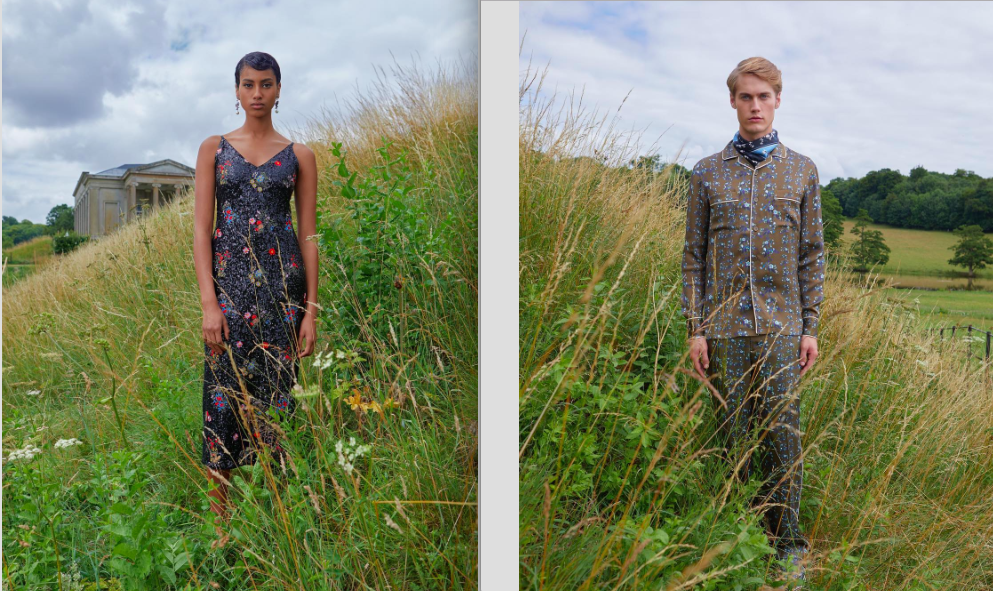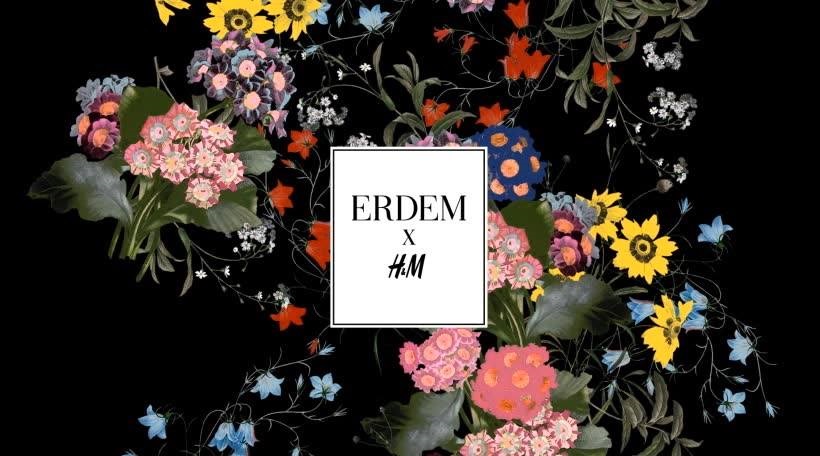
H&M and Erdem are the latest duo to give the mass-market, high-fashion collaboration a-go. The Swedish fast fashion giant and the London-based design darling announced on Thursday that they have teamed up for a capsule, which will hit stores on November 2nd in 22 countries. The collection itself and the details surrounding it are being “closely guarded,” according to Vogue, but the teaser video, directed by Baz Luhrmann, reveals leopard print coats, floor-length floral frocks, menswear, and little embellished dresses.
The announcement comes on the heels of H&M’s long history with collaborations and of reportedly bringing high fashion to those without the high fashion budget. In November 2004, H&M offered an exclusive collection with Chanel and Fendi creative director, Karl Lagerfeld. The line consisted of thirty pieces, which sold out within an hour at H&M’s New York, Los Angeles, and other large city stores. The Swedish fast fashion gains followed up with collections from Lanvin’s Alber Elbaz, Marni, Stella McCartney, Comme des Garçons, and Versace, among others.
Maybe the most interesting element of the mass-market, high-fashion collaboration is not the clothes (they are usually expensive for fast fashion, ill-fitting, and of sub-standard quality). It is the sell-through of the garments and accessories themselves, and the effect that such collabs have on the fast fashion brand’s bottom line.
Of the designer collections, with the exception of Missoni (which sold out, caused Target’s site to crash and then resulted in a widespread shortage of inventory and a massive shipping mess) and maybe Isabel Marant for H&M (key pieces from that collaboration sold out within minutes), most do not sell out. In fact, not only do the collections not sell out, they often end up heavily discounted after the fact.
Note: If they do sell out, they often result if widespread returns, to the point that H&M has attempted in recent seasons to strictly limit its return policy for the collabs; the number of returned garments was so high for the Versace x H&M collection that the retailer prohibited returns for its subsequent Margiela collection.
Yet, these partnerships of sorts have not ceased, suggesting that actual sales are not necessarily the only focal point.
The Takeaways
The takeaways for both parties are pretty clear: Designers (many of which are in the emerging stage – although there are some very obvious exceptions) benefit from massive amounts of publicity (think: Vogue ads, television commercials, big celebrity-filled parties, and signs plastered on the walls at Target and on the sides of buses) that these massive companies can provide.
This far exceeds the advertising budget of your ordinary young brand (or even many high fashion brands), and so, a collab with a mass-market retailer is a way to get their brand name on the radar of a lot of people, more or less, for free. (We will not take the potential risk of brand dilution into account, although that aspect suggests that such marketing is not without its own potentially hazardous implications for a brand positioning itself as a luxury one). Moreover, big brands like H&M tend to pay large sums – up to $1 million, if the rumors are true – to a creative director to front a collaboration of this nature.
The mass-market brand has the benefit of gaining a massive number of media impressions and also baiting the consumer into their stores and onto their websites, and selling them an array of things other than the hyped clothing and accessories – which are often priced quite significantly above the spending limits for most of the fast fashion brands’ usual shoppers.

Target, specifically, has used the approach in furtherance of its goal to raise the average unit retail prices in its apparel business. Some of these consumers are certainly new to the fast fashion giant – whether it be H&M or Topshop, etc. – yet another win for the retailer.
Is This Democratization?
As for what consumers gain, that is a bit murky. While the stated purpose of these collections is the democratization of high fashion (whatever that even means at this point), it is not all its made out to be – in more ways than one. More often than not, we end up with a Balmain-themed or Erdem-themed collection (these pieces are a far cry from any designer’s main line and thus, are not really a democratization of any “fashion” at all, a notion shared by Eugene Rabkin – the founder of stylezeitgeist.com) for a mass market retailer.
Furthermore, as noted by the Guardian not too long ago, “It seems that the heavily hyped, lower-priced versions of high-end goods don’t end up in the hands of the people who have to budget carefully when it comes to non-essential purchases.” When it comes right down to it, these items, regardless of whether they result from the actual creative genius of Donatella Versace or Erdem, himself, or are more of a licensing deal between fast fashion brand and high fashion brand (the latter is the more likely scenario), they are still fast fashion-quality garments, but at a bit of a higher price point (think: $600+ for some of the Balmain x H&M garments), which is simply not a feasible option for the average consumer.
Thus, it seems that an analysis in terms of sales – and a mission to make “fashion” for the average person – is not even an appropriate one to gauge such collections because those considerations are really little more than afterthoughts in an attempt to push fast fashion as usual.







